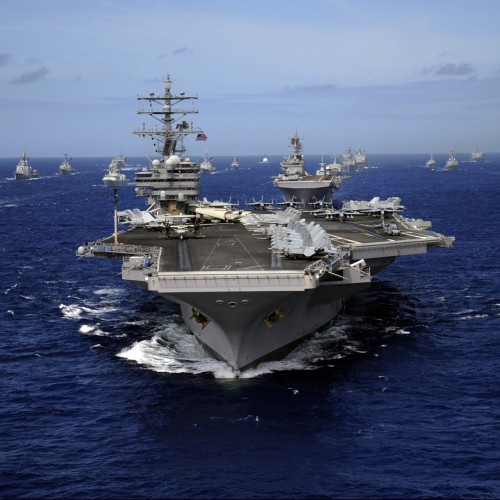
The U.S. Navy and the Department of Defense have agreed to begin shock testing on the USS Gerald Ford, the Navy’s new $12.9 billion carrier that is costliest ship of war ever built. The carrier went to sea for the first time in April of 2017 and is currently expected to go on active duty in 2022.
The Pentagon initially wanted to delay the shock test for six years until it could have a second copy of the new carrier (the USS John Kennedy) built. The U.S. Senate Armed Services Committee pressed the Navy to begin the test as originally planned.
The Ford was built by Huntington Ingalls Industries Inc. (NYSE: HII) in Newport News, Virginia. It is the first of four Ford-class carriers the company will build at an acquisition cost of $55 billion.
A shock test involves detonating underwater blasts near the ship to test its ability to withstand the shocks. The test is not intended to harm the ship or the crew that is on board at the time of testing.
According to Bloomberg, Deputy Defense Secretary Patrick Shanahan responded in a letter to pressure from Senators John McCain and Jack Reed to go ahead as planned instead of delaying the test: “We agree with your view that a test in normal sequence is more prudent and pragmatic.”
The U.S. carrier fleet is comprised of 11 nuclear-powered ships, 10 of which are the older Nimitz-class carriers that entered service in 1975. The number of ships in the carrier fleet is established in statute, which means that unless the law is changed a total of 11 Ford-class carriers ultimately will replace the existing 10 Nimitz class ships as the new carriers.
Take Charge of Your Retirement In Just A Few Minutes (Sponsor)
Retirement planning doesn’t have to feel overwhelming. The key is finding expert guidance—and SmartAsset’s simple quiz makes it easier than ever for you to connect with a vetted financial advisor.
Here’s how it works:
- Answer a Few Simple Questions. Tell us a bit about your goals and preferences—it only takes a few minutes!
- Get Matched with Vetted Advisors Our smart tool matches you with up to three pre-screened, vetted advisors who serve your area and are held to a fiduciary standard to act in your best interests. Click here to begin
- Choose Your Fit Review their profiles, schedule an introductory call (or meet in person), and select the advisor who feel is right for you.
Why wait? Start building the retirement you’ve always dreamed of. Click here to get started today!
Thank you for reading! Have some feedback for us?
Contact the 24/7 Wall St. editorial team.
